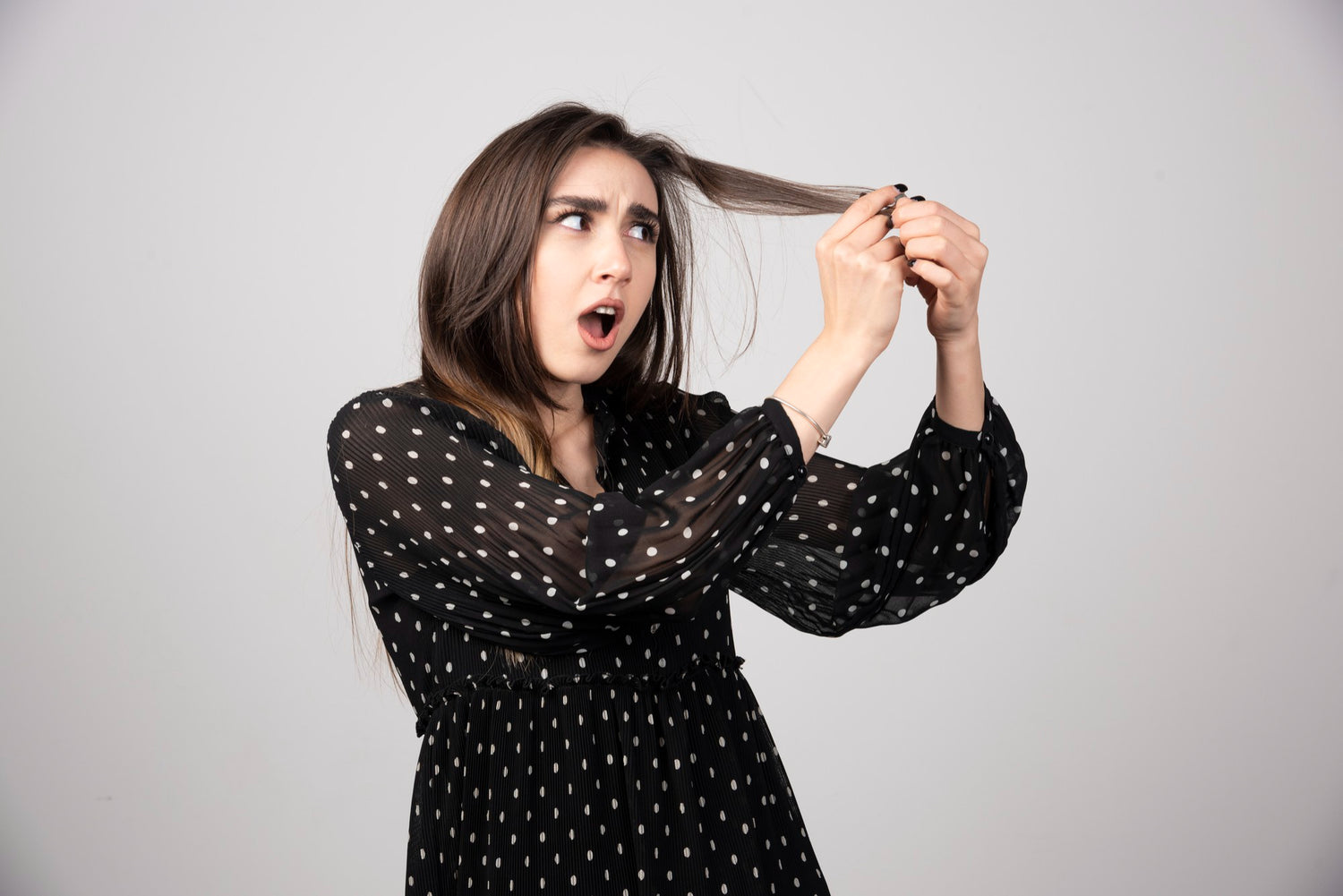Women's Hair Loss
Women's Hair Loss
The Women’s Hair Loss Treatment combines three clinically studied ingredients—Finasteride, Minoxidil, and Spironolactone to target hair thinning at its root. This powerful formula works to block DHT, improve blood flow to the scalp, and balance hormones that contribute to hair loss.
Together, these treatments help slow shedding, stimulate new growth, and strengthen existing hair. With consistent use and medical guidance, women can achieve thicker, healthier, and more vibrant hair. My Simple Med provides this therapy with discretion, convenience, and a focus on long-term results.
Finasteride / Minoxidil / Spironolactone
✔ 100% discreet, online consultation
✔ U.S. board certified physicians
✔ Trusted medications, money back guarantee
✔ Affordable pricing, no insurance required
✔ Fast shipping
Couldn't load pickup availability




Hair Loss Treatments for Women!
Are you experiencing hair loss or thinning? Get started today with our custom, compounded blend of Minoxidil/Spironolactone or Finasteride/Minoxidil (Post-Menopausal women only). Both clinically proven to help stop hair loss and regrow hair! Start our easy online process, answer a few questions then choose the best products to fit your specific needs and lifestyle.
- Dermatologist Approved
- Solutions for Women of All Ages
- Clinically Proven Medications
- Treats Hair Loss & Thinning
- Results in 3-6 Months

Hair Loss Treatments for Women!
Are you experiencing hair loss or thinning? Get started today with our custom, compounded blend of Minoxidil/Spironolactone or Finasteride/Minoxidil (Post-Menopausal women only). Both clinically proven to help stop hair loss and regrow hair! Start our easy online process, answer a few questions then choose the best products to fit your specific needs and lifestyle.
- Dermatologist Approved
- Solutions for Women of All Ages
- Clinically Proven Medications
- Treats Hair Loss & Thinning
- Results in 3-6 Months

Benefits:
✓ Slows or halts hair loss progression
✓ Stimulates regrowth of dormant or miniaturized follicles
✓ Thickens hair and restores scalp density
✓ Suitable for both male and female patients
✓ Daily use produces visible results in 3–6 months
✓ Options for oral or topical application depending on sensitivity and goals
How it works
Get your medication in 3 easy steps
Take the health questionnaire
100% online and confidential health intake form
Get your prescription
All prescriptions overseen by fully licensed and insured physicians
Get your meds
Fast free delivery from our accredited pharmacies
Need help?
Frequently asked questions
How does it work?
These three medications address the root causes of hair loss through complementary mechanisms:
1. DHT Blockade (Finasteride & Spironolactone)
• Finasteride inhibits 5-alpha reductase, blocking testosterone from converting into DHT (dihydrotestosterone), which causes follicle miniaturization.
• Spironolactone works as an anti-androgen, lowering androgen receptor activity and reducing scalp DHT sensitivity—especially beneficial in women with hormonal hair loss.
2. Follicular Blood Flow (Minoxidil)
• Minoxidil dilates scalp blood vessels, increasing oxygen and nutrient supply to hair follicles. This boosts follicle activity, thickens hair shafts, and encourages regrowth.
3.Custom Compounded Therapy
• Combining these medications in customized oral or topical blends enhances effectiveness while minimizing systemic side effects. Formulations are dermatologist-designed for men and women.
What are the side effects & precautions?
Finasteride (Oral):
• Decreased libido or erectile dysfunction (1–2%)
• Lower ejaculate volume
• Contraindicated in women of childbearing age (Category X)
• Rare persistent sexual side effects
Finasteride (Topical):
• Scalp irritation, pruritus, or erythema
• Fewer systemic effects compared to oral
Minoxidil (Oral):
• Fluid retention or ankle swelling
• Elevated heart rate
• Hypertrichosis (unwanted body/facial hair)
• Rare: pericardial effusion, chest pain
Minoxidil (Topical):
• Scalp dryness or burning
• Eczema, dermatitis, or redness
Spironolactone (Oral):
• Elevated potassium (hyperkalemia)
• Dizziness, dehydration, or lightheadedness
• Menstrual irregularities
• Breast tenderness or GI symptoms
• Generally well tolerated in monitored doses
What to expect?
• Initial shedding may occur in the first 4–6 weeks
• Visible improvements begin around 3–4 months
• Most patients see significant improvement at 6–9 months
• Full regrowth potential is typically seen at 12 months
• Daily adherence is essential—missed doses reduce efficacy
• Discontinuation can reverse results in 3–6 months
What is Finasteride?
Finasteride 1mg is an oral tablet, prescription medicine that is FDA approved to treat male pattern baldness. At a higher strength of 5mg, Finasteride is FDA approved to treat BPH (Benign prostatic hyperplasia).
How does Finasteride work?
Finasteride belongs to a group of drugs called 5-alpha reductase inhibitors. It works by blocking the conversion of Testosterone to DHT by up to 70% and therefore lowers DHT levels in the body and at the scalp. Lowering DHT will allow your hair to start the process of growing back.
What can I expect with Finasteride treatment?
Results will begin appearing after 3-4 months but significant results may not be apparent for 6-9 months after starting the medication. Full results are usually seen approximately 1 year after starting treatment with Finasteride and using the medication on a daily basis. Patients who skip treatment days, weeks, or months may find that the medication does not work as effectively and does not produce the results they were expecting.
How to take Finasteride?
Finasteride comes as a tablet to take by mouth. It is usually taken once a day with or without food. Take Finasteride at around the same time every day. Follow the directions on your prescription label carefully. Take Finasteride exactly as directed. Do not take more or less of it or take it more often than prescribed by your doctor.
What should I do if I miss a dose of Finasteride?
If you forget to take your daily dose of Finasteride, skip the missed dose and continue your regular dosing schedule. Do not take a double dose to make up for a missed one.
What are the possible side effects of Finasteride?
Finasteride is a medication primarily used to treat male pattern hair loss (androgenic alopecia) and enlarged prostate (benign prostatic hyperplasia). Like any medication, it can have potential side effects. The most common side effects of Finasteride include:
- Sexual side effects: This is the most well-known side effect of Finasteride. It may include decreased libido (sex drive), erectile dysfunction, and decreased ejaculate volume. In some cases, these side effects may persist even after discontinuing the medication.
- Breast enlargement and tenderness: Some men may experience breast enlargement and tenderness, a condition known as gynecomastia.
- Allergic reactions: Rarely, some individuals may experience allergic reactions to Finasteride, which may manifest as rash, itching, swelling, dizziness, or difficulty breathing.
It’s important to note that not everyone experiences these side effects, and most people tolerate Finasteride well. If you are prescribed Finasteride, your healthcare provider will monitor your progress and discuss any potential side effects with you. If you notice any troubling side effects while taking Finasteride, it is crucial to discuss them with your doctor as soon as possible.
How should I store Finasteride?
Keep this medication in the original container that you received it in, tightly closed, and out of reach of children. Store it at room temperature and away from excess heat and moisture (not in the bathroom).
What is Minoxidil?
Minoxidil is a prescription medication used to stimulate hair growth. Minoxidil widens blood vessels which leads to increased blood flow to hair follicles. This improved blood flow, in turn, enhances the follicles’ function and stimulates hair growth in individuals experiencing hair loss.
What are the possible side effects of Oral Minoxidil?
Side effects are uncommon at the low doses used to treat hair loss. However, as with all prescription medications, side effects can occur:
- Fluid Retention: Oral minoxidil can lead to fluid retention, causing swelling in the ankles and other parts of the body.
- Increased Heart Rate: It may cause an increase in heart rate, which can be problematic for individuals with certain cardiovascular conditions.
- Hypertrichosis (Excessive Hair Growth): One interesting side effect is increased hair growth. While this is a desired effect when using Minoxidil for hair loss, this hair growth can appear on other parts of the body.
- Pericardial Effusion: There have been reports of oral minoxidil causing fluid accumulation around the heart (pericardial effusion).
- Electrolyte Imbalance: It can lead to electrolyte imbalances in the body.
- Chest Pain: Some individuals may experience chest pain or discomfort.
What are the possible side effects of Topical Minoxidil?
Side effects of topical Minoxidil typically occur on the scalp and may include:
- Irritation
- Eczema
- Erythema
- Burning
- Dermatitis
What are the possible side effects of Topical Finasteride?
It is important that women of child-bearing age do not take or handle Finasteride as it may cause birth defects. The most common side effects of Topical Finasteride typically occur on the scalp and may
include:
- Scalp Pruritus
- Burning Sensation
- Irritation
- Contact Dermatitis
- Erythema (redness on the skin)
What are the possible side effects of Spironolactone?
Overall, side effects from Spironolactone and low but as with all prescription medications, side effects can occur:
- Hyperkalemia: Spironolactone can lead to elevated levels of potassium in the blood, which can be serious and may require monitoring.
- Dehydration: It can cause dehydration due to increased urination.
- Low Blood Pressure: Some individuals may experience low blood pressure, especially when standing up quickly.
- Dizziness or Lightheadedness: This can be a side effect, particularly when initiating treatment or changing the dosage.
- Menstrual Irregularities: Women may experience changes in their menstrual cycle.
- Breast Tenderness or Enlargement: Spironolactone has anti-androgenic effects, and some individuals may experience breast tenderness or enlargement.
- Gastrointestinal Issues: Nausea, vomiting, and diarrhea are possible side effects.
You may also like
-
Erectile Dysfunction
Regular price $60.00Regular priceUnit price / per -
Testosterone Cypionate
Regular price $129.00Regular priceUnit price / per -
Low Dose Naltrexone
Regular price $89.99Regular priceUnit price / per -
Rapamycin (Anti-Aging)
Regular price $0.00Regular priceUnit price / per



